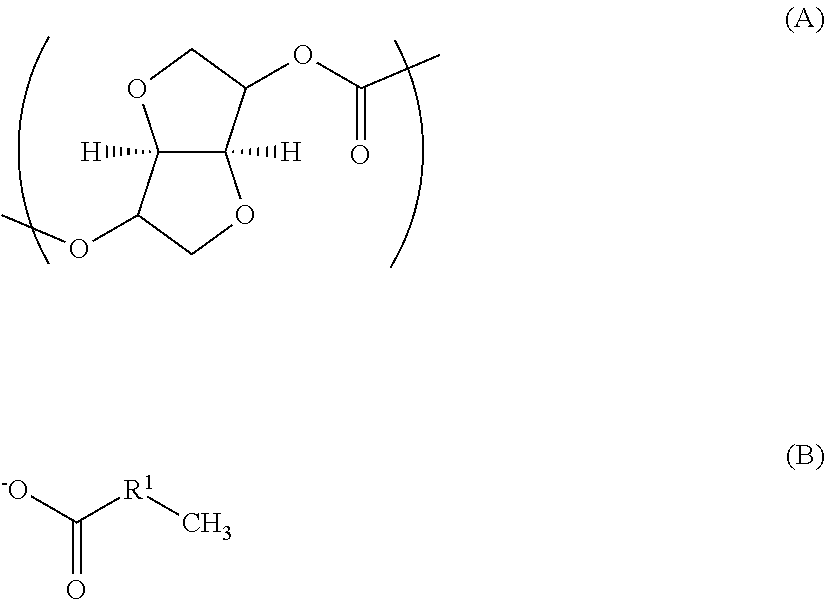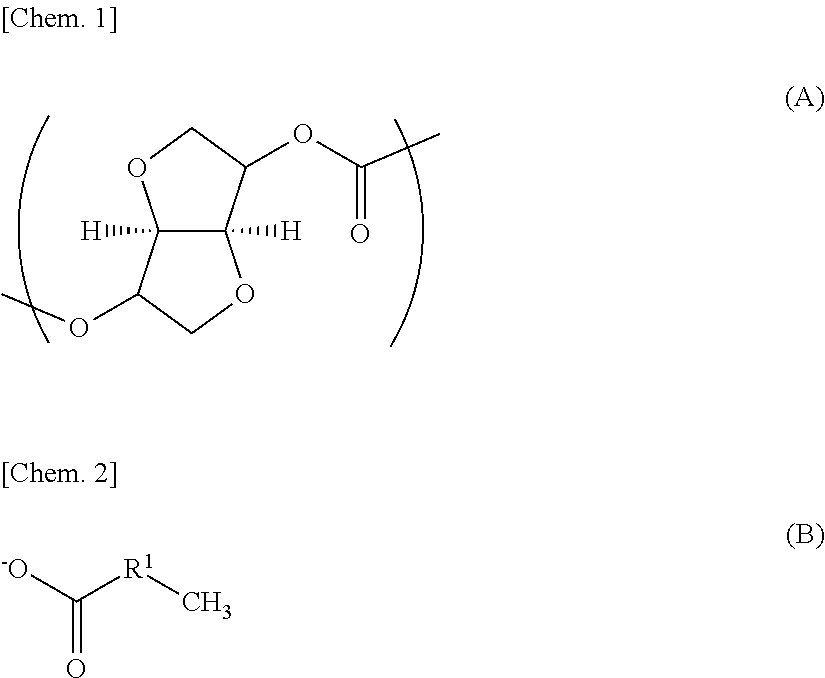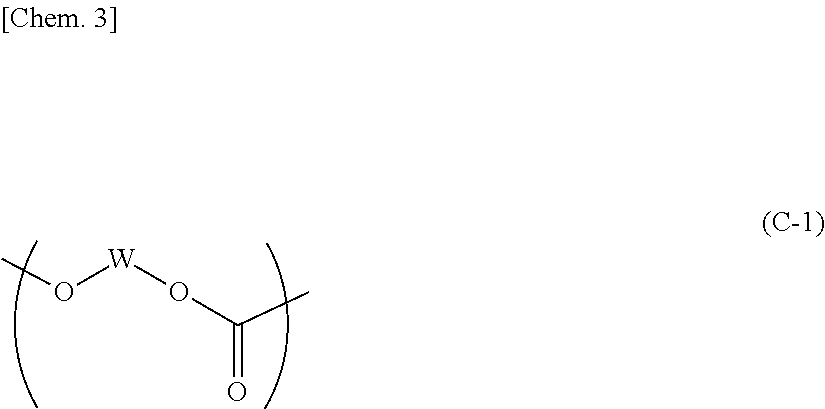Polycarbonate resin composition
a polycarbonate resin and composition technology, applied in the field of polycarbonate resin composition, can solve the problems of increasing the amount of attention and the concern of hydrolysis acceleration, and achieve the effects of low water absorption coefficient, excellent heat resistance, and practical mechanical strength
- Summary
- Abstract
- Description
- Claims
- Application Information
AI Technical Summary
Benefits of technology
Problems solved by technology
Method used
Image
Examples
example 1
[0230]In a nitrogen atmosphere, 436 parts of isosorbide (abbreviated as ISS hereinbelow), 65 parts of 1,8-octanediol (abbreviated as OD hereinbelow) and 750 parts of diphenyl carbonate (abbreviated as DPC hereinbelow), and 1.3 μmol of barium stearate as a catalyst, per 1 mol of diol monomer were heated to 180° C. to melt. Thereafter, the decompression degree was adjusted to 13.4 kPa over 30 minutes. Then, the temperature was raised to 250° C. at a rate of 60° C. / hr and maintained at that temperature for 10 minutes, and the decompression degree was adjusted to 133 Pa or less over 1 hour. The reaction was conducted for a total of 6 hours under stirring. After the reaction was completed, the resulting product was discharged from the bottom of the reaction tank under a pressurized nitrogen atmosphere and cut with a pelletizer while cooled in a water tank to obtain pellets.
[0231]To 100 parts by weight of the pellets obtained, 0.1 parts by weight of ADEKA STAB LA-63P (manufactured by ADEK...
example 2
[0233]Exactly the same operation as in Example 1 was performed except that 1.3 μmol of barium propionate was used as a catalyst for 1 mol of diol monomer, and an evaluation similar to Example 1 was performed. The results are shown in Table 1.
example 3
[0234]Exactly the same operation as in Example 1 was performed except that 0.1 parts by weight of ADEKA STAB LA-52 (product made by ADEKA Co., Ltd.) represented by the following structural formula was used as a light stabilizer, and an evaluation similar to Example 1 was performed. The results are shown in Table 1.
[0235]
PUM
| Property | Measurement | Unit |
|---|---|---|
| glass transition temperature | aaaaa | aaaaa |
| molar ratio | aaaaa | aaaaa |
| molar ratio | aaaaa | aaaaa |
Abstract
Description
Claims
Application Information
 Login to View More
Login to View More - R&D
- Intellectual Property
- Life Sciences
- Materials
- Tech Scout
- Unparalleled Data Quality
- Higher Quality Content
- 60% Fewer Hallucinations
Browse by: Latest US Patents, China's latest patents, Technical Efficacy Thesaurus, Application Domain, Technology Topic, Popular Technical Reports.
© 2025 PatSnap. All rights reserved.Legal|Privacy policy|Modern Slavery Act Transparency Statement|Sitemap|About US| Contact US: help@patsnap.com



